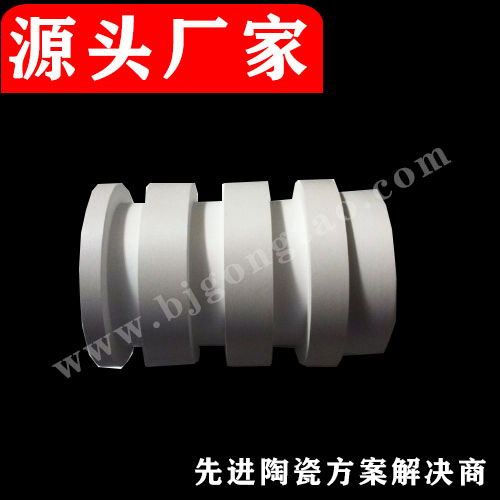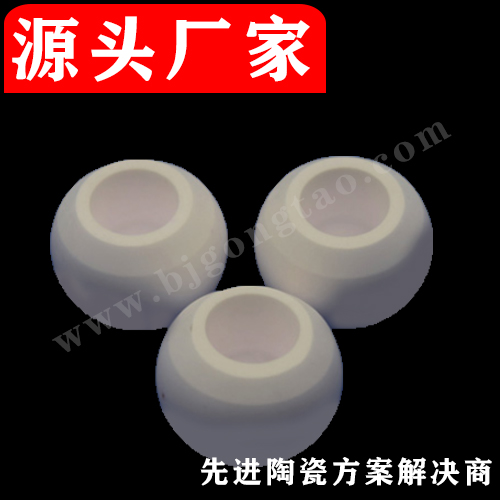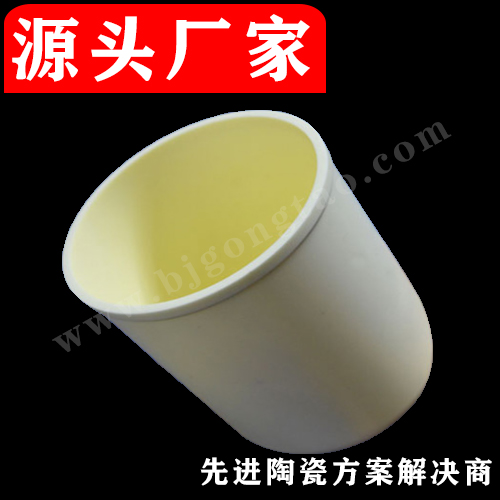
Suzhou Kaifa New Material Technology Co., Ltd.
Email:heqing@szkfxc.com
Email:sales@szbknm.com
Email:bkxc.bonnie@gmail.com
Structural ceramics with the best comprehensive properties - silicon nitride
Structural ceramics with the best comprehensive properties - silicon nitride
Special ceramics refer to a class of ceramics with special mechanical, physical or chemical properties. The raw materials used and the required production technology are quite different and developed from ordinary ceramics. According to the characteristics and uses, special ceramics can be divided into two categories: structural ceramics and functional ceramics. Among them, structural ceramics refer to ceramics that can be used as engineering structural materials, and generally have high strength, high hardness, high elastic modulus, high temperature resistance, wear resistance, corrosion resistance, oxidation resistance, thermal shock resistance and other characteristics.
There are many kinds of structural ceramics, with different advantages and disadvantages and different application directions. Among them, "silicon nitride ceramics" are known as the most comprehensive type of structural ceramics due to their balanced performance in all aspects. application.
Silicon nitride (Si3N4) can be divided into covalent bond compounds, with [SiN4]4-tetrahedron as the structural unit, the specific positions of nitrogen atoms and silicon atoms can be seen from the figure below, silicon is in the center of tetrahedron, tetrahedral The positions of the four vertices are occupied by nitrogen atoms, and then every three tetrahedra share one atom, which repeats and extends in three-dimensional space, and finally forms a network structure. Many properties of silicon nitride are associated with this tetrahedral structure.
There are three crystalline structures of silicon nitride, namely α, β and γ three phases, of which α and β phases are the most common forms of silicon nitride. Due to the strong bonding between nitrogen atoms, silicon nitride has good properties such as high strength, high hardness and high temperature resistance, and the hardness can reach HRA91~93; Small chemical reaction with metal elements leads to low friction coefficient; self-lubricating, so wear resistance; strong corrosion resistance, except for hydrofluoric acid, it does not react with other inorganic acids, and it also has resistance to high temperature. Oxidation ability; it also has good thermal shock resistance, and it will not break if it is rapidly cooled in the air and then heated rapidly; silicon nitride ceramics have small high temperature creep, and under the action of high temperature and fixed load, the resulting slow plasticity The deformation is small.
In addition, silicon nitride ceramics also have the advantages of high specific strength, high specific modulus, high thermal conductivity, and excellent electrical properties, so they have special application value in extreme environments such as high temperature, high speed, and strong corrosive media. One of the structural ceramic materials with development and application prospects is often the first choice in many applications that need to be tested. The following is an inventory of these application directions.
Regarding the application of silicon nitride, it first appeared in the 1950s. It was used as a bonding phase between silicon carbide and oxides for refractory materials, and was subsequently used in the manufacture of crucibles, thermocouple tubes, rocket nozzles, etc. In the 1960s, with the increasing demand for new materials with excellent high temperature performance, the development speed of silicon nitride ceramics increased significantly. At present, the development of silicon nitride materials is mainly in the ceramics and electronic industries, and it is constantly expanding to other application fields.
1. Silicon nitride ceramic bearings
Ceramic bearings have developed rapidly since they were developed in 1972. It has been widely used in precision machine tools, automobiles, aero-engines, chemical instruments, superconducting devices and other fields. As a bearing material, the most basic characteristic is rolling fatigue life. In order to evaluate the applicability of various ceramic bearings, a rolling life test is carried out with a ceramic flat plate. The rolling life ranking results are: alumina < silicon carbide < zirconia < nitride silicon. It can be seen that among the above four common engineering structural ceramics, Si3N4 is the most suitable for bearing materials.
The application of silicon nitride ceramic materials in bearings in the wind power industry is mainly divided into two categories: silicon nitride ceramic bearings, silicon nitride ceramic rolling elements and hybrid ceramic bearings made of steel bearing bases. Silicon nitride ceramic bearings refer to bearings with inner and outer rings and rolling elements made of silicon nitride ceramic materials, and cages made of stainless steel, nylon, zirconia, silicon nitride or specific aluminum alloys, and their performance is better than hybrid ceramic bearings.
2. Aerospace
In the aerospace field, the requirements for material properties are very strict, challenging the limits of traditional materials. Si3N4 is a good choice for aerospace applications due to its high temperature strength, good fracture toughness, high hardness, high dielectric strength, excellent thermal shock resistance and tribological properties, ensuring excellent mechanical reliability and wear resistance. sex. Rocket combustor thrusters, which can be used to control satellite orbits, are demanding on materials. Since high-temperature combustion can obtain greater propulsion, it is not only required to be light in material, but also able to withstand high temperatures.
3. High temperature parts of automobile engine
The Si3N4 ceramic components used in automobile engines include: turbocharger turbine rotor, preheating combustion chamber, rocker arm inserts, injector connecting rods, valve guides, ceramic piston crowns, glow plugs, etc., especially the most difficult ceramic rotor products have been Entering some ceramic engines, small turbine rotors have entered commercial-scale production.
4. Silicon nitride ceramic heat dissipation substrate
The heat dissipation substrate in the electronics industry needs to dissipate the heat of the components in the integrated circuit in a timely and effective manner. In addition, the substrate needs to have strong enough mechanical properties to cope with very harsh conditions such as temperature and pressure. Although the thermal conductivity of silicon nitride ceramics is lower than that of aluminum nitride and beryllium oxide, it is significantly higher than that of general structural ceramics, which can basically meet the heat dissipation requirements of the substrate; moreover, the strength and fracture toughness of silicon nitride ceramics are much higher than other The substrate-like ceramics are the heat-dissipating substrate materials with excellent comprehensive performance, and have been practically applied in the electronic control systems of high-speed rail and electric vehicles.
5. Application in other fields
Because of its excellent high temperature resistance and corrosion resistance, silicon nitride ceramics can be used in chemical corrosion-resistant and wear-resistant parts, semiconductor industry, including missile radomes for defense industry, ceramic materials for biomedical use, nuclear power main pumps as sealing rings, Silicon nitride ceramic ring for polysilicon reduction furnace, heat insulation disc cover, newly developed silicon nitride ceramic coil spring, not only can maintain high strength at 1000 ℃ temperature, but also have strong corrosion resistance, used in special valves .





